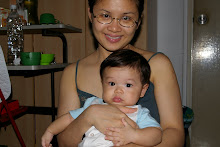What have I learned? What did I find more interesting?
I have learned and found out that the articles obtained from Wikipedia can be edited from time to time, so is not a static article. I have also learned that it is possible to see or check who has edited the article and to what extend has the article been edited.
I have also learnt the existence of social bookmarking sites such as Delicious.com that enables me to save my bookmarks in the Internet and also share the bookmark with others. The social bookmark also allows me to type a heading or topic of my interest and the programme will list out all the websites that have been tagged with that heading/topic. From there, I get to browse websites that are of relevance to me, thus saving time on clicking on websites that eventually turned out to be irrelevant. Previously, the only bookmark that I know of is the "Favourites" button in my Internet Explorer and this method of bookmarking is 'isolated' and 'lonely'.
Blogs are something that I have become excited in ever since joining this course. Previously, I knew the existence of blogs but just could not comprehend what the blogging excitement or blogging enthusiasm is all about. With the assignment of having to set up my own CENL2008 blog, I discovered how to tinker around with the layout and settings (e.g., adding favourite links, resource links, photo slideshow, html/javascript code, statistic counter, tickers and various other website/blog 'ornaments'). With the CENL2008 blog assignment, came my initiative (and excitement!) to set up another blog that serves my personal side, i.e., a blog that records the events, developments, rants and rave of a new working mother and her baby and to develop my baby's blog into a one-stop resource centre (or link, perhaps?) for all things related to trying-to-conceive, pregnancy and parenting, including links to personalized baby movie trailers, baby- or children-oriented online games, printable colouring pages, printable personalized story books and in the future, links to parenting-related freebies.
I have also learned that I can actually do a voice recording and then upload it into the Internet via podcasting hosting sites. This lesson has also made me aware of the existence of a free software called Audacity that does voice/sound recording and editing. After tinkering with Audacity (and of course buying a headphone that comes with microphone), I realized too that the simplest item that allows you to do podcasting is to merely record your voice using handphone with microphone function and that it will be automatically recorded in mp3 format. What follows after that is merely to upload into a podcasting hosting site. However, if I record using Audacity, I will need a converter software to convert the recording in wav to mp3. In other words, more steps are involved if I use Audacity. The only thing is that Audacity allows voice editing whereas the handphone does not.
I learnt also about the existence of microblogging and how microblogging serves more as a brief dialogue for people to communicate about what he/she is doing at any one time. In other words, microblogging is a tool that allows a network of people to stay up to date with each other.
Social networking, however, is not new to me, but the functions and wonders Facebook can do is new to me. I started off with Friendster and thought that there is all there is to social networking. Not until I used Facebook do I realize that Facebook is a lot more fun than Friendster and incorporates the microblogging function as well. Previously, friends have invited me to join Facebook, but I never bothered because I felt too lazy to refill in all the particulars of my profile like how I did in Friendster....until the CENL2008 assignment forced me to!
The aggregator is also a new thing to me. I never knew the existence of aggregator before joining this course. Sure, I do remember seeing the word "RSS" or the rainbow-like icon in websites but was never bothered to find out what they mean. This course sure has forced me to 'open my eyes'!
What would I have liked to explore but is not covered?
This question is more difficult for me to answer because if I have known the thing existed, then I would have explored it already before joining this course. Or to put it in an analogy: a student must know what are the things that they still don't know before they even know what to ask.
Whatever it is, looming questions in my head are:
- How do we start a fresh new article in Wikipedia? This is what I pondered if I want to set up a Wikipedia page for my students to edit for assignment purposes.
- How do you set up a website? Or even a moodle?
If I am to teach this course, what will I do to improve it?
I am satisfied with the CENL2008 online course because it has taught me a lot of things and sets the foundation on how I can apply this knowledge to enhance the 'digital' element/side of my teaching career. Thus, currently, I do not have any suggestions to improve it. Perhaps I will have suggestions to improve it when I'm in the process of implementing digital technologies/tools/media into my teaching.



